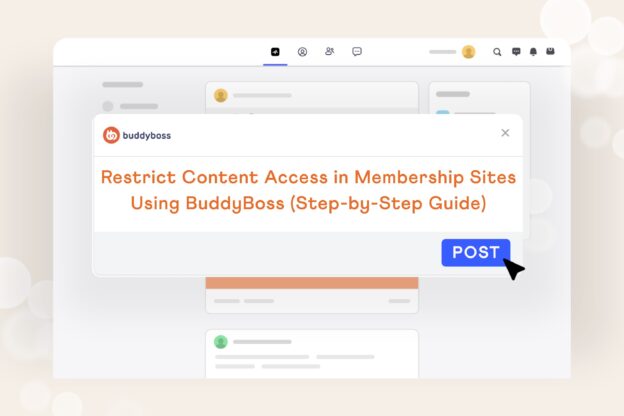In simple terms, a membership site is a members-only area of the internet, accessed by a restricted group of people who subscribe – either with a payment, or not.
People generally set up membership sites as a source of revenue, and to drive customers to their content.
However, membership sites come in all shapes and sizes – also covering volunteer communities, internal intranets or student resource centres. Membership sites can be added to existing online businesses, or set up by entrepreneurs with a passion for sharing their expertise.
Interested in setting one up? Read on to educate yourself about everything membership!
Who runs membership sites?

Anybody with a set of content that they can sell could run a membership site.
Equally, anyone that wants to bring together a community of members could run a membership or subscription site.
That’s a pretty broad spectrum of potential site owners. If you have expertise and a collection of content – course materials, training guides, videos – then you are in a position to invite subscribers to join a membership site.
Beyond attracting members, the key to a successful site is retaining them: through varied, timely, fresh content and an active and well-moderated community.
Consider this: What do LinkedIn and Netflix have in common? They are both examples of global membership sites. One is free, one is paid. However, the “free” site includes a premium payable version. Could your business offer free content, with the option to upgrade to include a more personal service?
Who signs up – and how do they benefit?

Given the variety in the membership site landscape, members come in all shapes and sizes.
Some come to your site because they are interested parties – charity workers, for example, or parents with an interest in your topic.
Others are drawn to the payable content because they want to learn new skills, or access resources that would be difficult to find elsewhere.
If you run a payable subscription site, you need to think carefully about your charging model – and how to allow for cancellations mid-subscription.
Make the subscription an engaging and exciting experience, and your members will come back for more – rather than shopping around.
Did you know? Most member site target 75% retention, but the actual retention rate is slipping with only 65% of sites reporting that they meet this target. New sites should focus on surveying and engaging their members to stop this negative retention creep.
How are membership sites built?

A membership site is usually a gated barrier via a plugin like Memberpress, which allows access to a WordPress site.
Custom themes and plugins can be created by working with developers, who can tailor your site to your organization and its members. They will handle the security implications, which are considerable when dealing with member data and payment information.
Individuals are able to use standard WordPress themes to employ a desired style to their membership site, if they are content with a more basic site.
There are plenty of guides that can help you create a quick, community-focused membership site that individuals can use to get up and running.
Can an entrepreneur make money from a membership site?

With a commitment to maintaining a lively community, and updating fresh content on a regular basis, there is a huge amount of revenue potential for membership site owners.
We can all search for, and find, wildly optimistic stories of people making vast sums in our desired field.
There is plenty of evidence, though, that if you are prepared to put in the work – creating unique and valuable content, and offering something you can’t get elsewhere – then you will be able to make a good living as an entrepreneur through your membership site.
If you have these three things in place, you can expect to do well from day one with a membership site:
- Engaged audience who are interested or ready to buy
- Existing content that you want to share
- A heavy focus on community activity
Consider this: If each of your members paid you even a $10 monthly subscription, you’d be taking $500 per month if you managed a fairly conservative 50 members. That provides an enticing prospect to incorporate a subscription model into your new venture.
Who is doing membership sites right?
Fashion, groceries and entertainment brands are all across subscription ecommerce – meaning members pay for regular product deliveries, but benefit from reductions due to scale.
You only need to look at the success of Amazon’s “Subscribe and Save” offer to see this is an important element in online retail.
But, away from retail and the bigger companies, member sites that do best offer real value to their members – building up a healthy base, and keeping them interested with personalized delivery.
The relationship between site and member must feel individual, relevant and incentivized.
Give your members a reason to join – and stay.
Consider this: Both the UK Times and the New York Times have introduced paywalls for premium content, making their online offer a subscription model. This is seen as the future of “print” media – can your business afford to miss out on subscription revenue?
Where do people go wrong when running a membership site?

If your design and usability isn’t thoughtful and thoroughly tested, your members will experience nothing but frustration.
As with every good development, users shouldn’t really be aware of the interface – just on the quality of their interactions with the site.
Developing a membership site that isn’t mobile-first?
Then good luck catching your members whilst they are a captive audience: on the train, waiting for a meeting, killing some time.
Make it easy for your members to respond to your invitations and participate in your online community.
While you’re putting member experience first, don’t forget to secure their financial information – failure to work carefully on security considerations for your site will put your members, and your business, at risk.
Membership sites are everywhere. If you have an idea for a niche subscription site, promoting your own content that is unique and available solely through you, then you should be in the process of building a membership site.
If you are, remember to focus on quality design, fresh content and member retention. If you aren’t – then look for a great membership site developer to give your business an important advantage.












